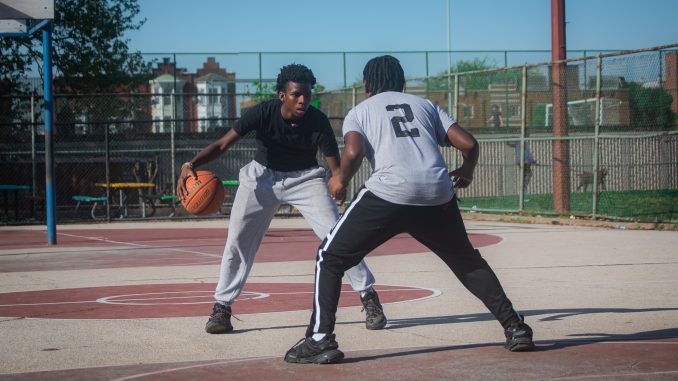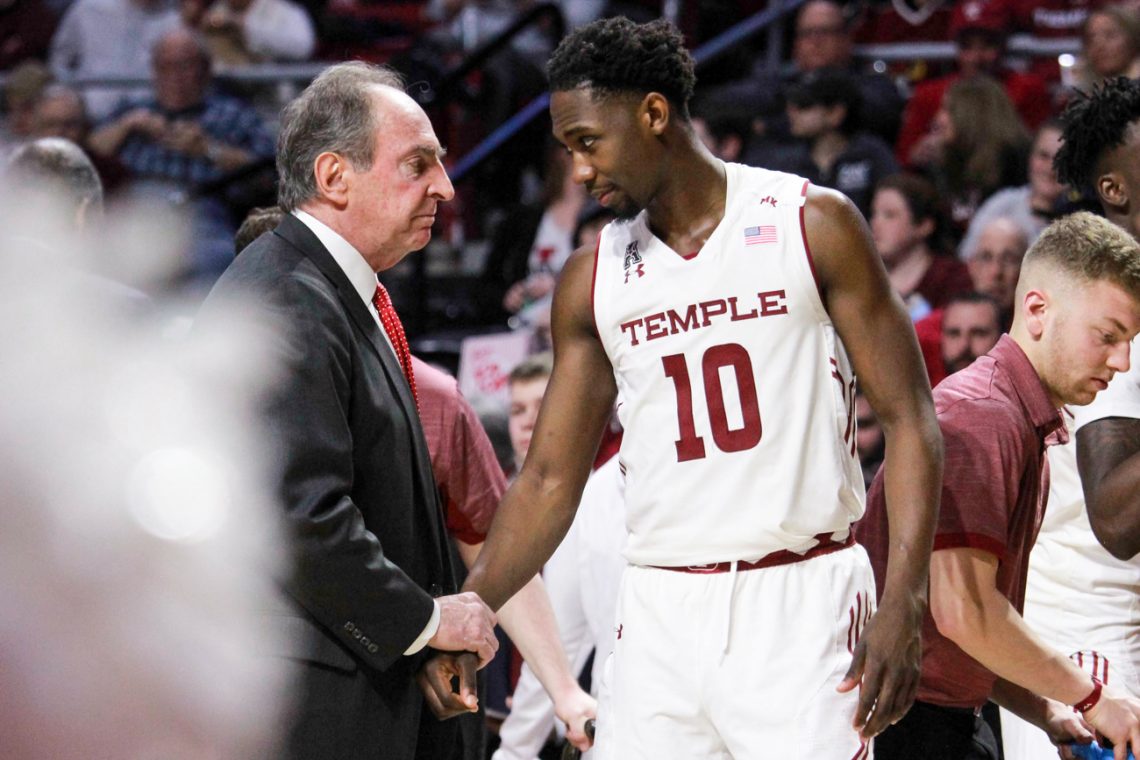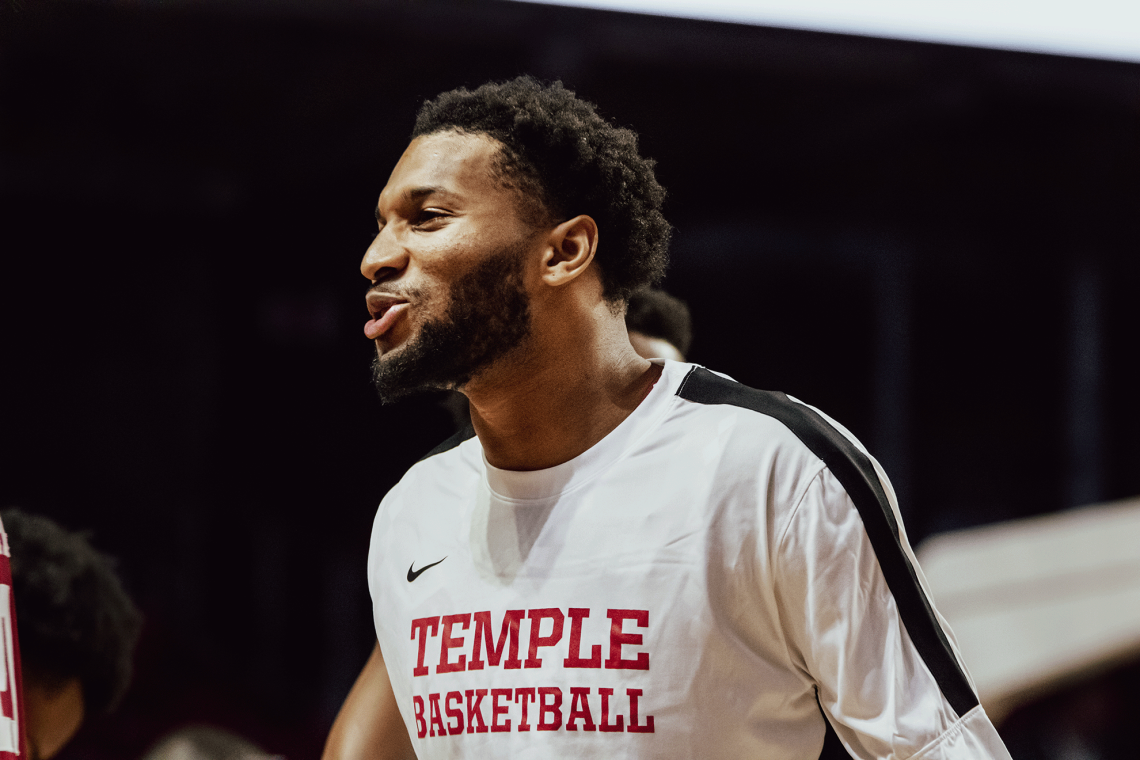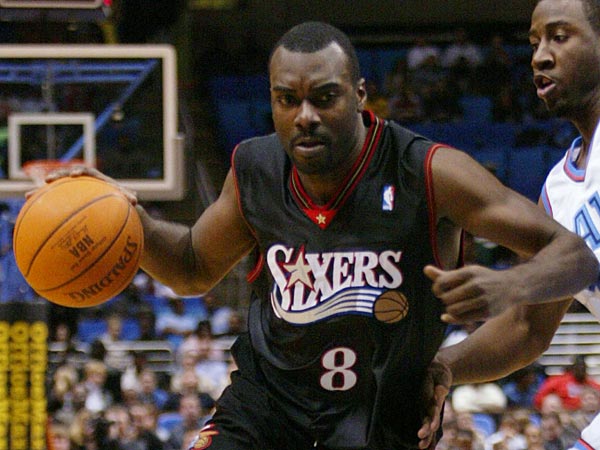
In 2013, Shizz Alston Jr. received an offer from Temple the summer before his junior year at The Haverford School, just outside of Philadelphia. The former guard, who was rated as a four-star recruit by 247Sports, also received offers from programs like Penn State, Rutgers, Seton Hall, Marquette and Notre Dame.
Despite garnering interest from prominent programs, Alston Jr., who grew up a Temple sports fan, decided to stay in Philadelphia. He idolized Temple greats, like Ramone Moore and Dionte Christmas, and wanted to participate in Temple’s historic basketball legacy in the city that raised him. After receiving offers from fellow Big 5 schools including La Salle, Penn and Saint Joseph’s, he committed to Temple prior to his senior season at Haverford.
“For a lot of my recruitment I wanted to go away, I was planning on going away,” said Alston Jr., who graduated from Temple in 2019 and now plays in the Japanese B.League. “It was a mixture of me talking to [Former Temple head coach Fran Dunphy] and when Aaron McKie decided to come back and be an assistant coach at Temple, that kind of sealed the deal for me to come and stay in Philly.”

It’s increasingly rare for local recruits to take a path similar to Alston Jr.’s. In recent years, most Philadelphia-area recruits have opted to leave the city and commit to colleges in other parts of the country because of new name, image and likeness deals, easy access to the transfer portal later on and schools’ willingness to recruit nationally.
In 2009, seven of the 15 players on Temple’s roster were from Philadelphia or the surrounding metropolitan area. This past season, Temple had just two players from the area: guard Hysier Miller, who played at Neumann Goretti, and Zach Hicks of Camden Catholic. Hicks transferred to Penn State, while Miller returned to Temple after testing the transfer portal.
Villanova, La Salle and Penn each had less than four players on their roster from Philadelphia or the surrounding area during the 2022-23 season. In this year’s recruiting class, just three Philadelphia-area recruits with a three-star rating or higher on 247Sports committed to a City 6 school. Among the four Philadelphia-area high school players listed in Rivals’ top 150 nationwide recruits list, including three in the top five, none will be attending a City 6 school.
It’s possible recruits are deterred from Philadelphia schools because of the lack of quality play from the teams in recent years. This past season, the City 6 failed to produce an NCAA tournament team for the first time since 1977, but other factors contributed to recruits’ decision to leave the area.
“The pool is smaller in terms of the recruitment of high school student athletes,” said Andy Carl, the executive director of the TUFF Fund, an independent NIL collective that supports Temple athletes. “I think more and more coaches are starting to embrace and realize that through the transfer portal, a 22 or 23-year-old, fully developed, know-what-you’re-getting student athlete is a lot different than maybe a kid that is 17 or 18 stepping foot on campus.”
Philadelphia-area recruits might also be more encouraged to leave the city because of the possibility of returning home as a backup option if things don’t work out at the programs they choose to join.
Temple was unable to land forward Taj Thweatt in 2020, who opted to go to West Virginia. After receiving limited playing time, the Wildwood, New Jersey, native entered the transfer portal and ended up closer to home at Temple after his stint in Morgantown.

Elite programs in conferences, like the Big 12, ACC, Big Ten and even the Big East, can also make financial promises to players that Big 5 schools, with the exception of recent national champions Villanova, can’t make.
Even a player like Miller, who entered the transfer portal this offseason but returned to Temple on April 10, was likely presented with financial offers out of Temple’s price range. Offers could have even come from schools in less prominent conferences than the American, but players are often willing to transfer down if it means earning more from NIL opportunities.
Miller averaged just 8.6 points and 3.8 assists per game with a field goal percentage less than 37 percent for the Owls this past season. Still, it’s likely teams presented him with money that Temple wouldn’t have matched.
“All it takes is one or two fluent or wealthy, passionate business owners or alumni to be able to bankroll a salary for the program,” Carl said. “At any moment, someone can decide they want to take their significant wealth and apply it to NIL agreements that can be offered on the recruiting trail.”
Temple has struggled with alumni engagement in athletics in recent years. The university does not have the wealthy donors compared to the schools who are landing Philadelphia-area recruits. The lack of contributions is apparent in how multiple buildings on Temple’s campus are still without donor names, like 1300 Residence Hall and 1940 Residence Hall.
NIL aside, Temple and the other city schools are simply not as competitive and nationally recognized as they were in previous decades when they would reel in the city’s top ranked recruits. It’s hard to convince a highly-touted recruit to come play for a Temple team that got blown out by 30 points in the second round of the AAC tournament and failed to qualify for any postseason tournament, regardless of the money.
In the 2022-23 season, Penn was the only Big 5 school to finish the season with a record above .500. The Big 5 also does not carry the same weight as it previously did in the city. When McKie, arguably the most successful basketball player in the program’s history, committed to Temple from Simon Gratz High School, Big 5 competition was more culturally significant in Philadelphia.

Villanova, which has won at least a share of the Big 5 title every year but one since the 2013-14 season, still split the Big 5 title this season with Temple despite finishing with a mediocre record of 17-17.
“When I was a kid there weren’t that many options,” Dunphy said. “You didn’t think about going away, you just thought the whole world revolved around Philadelphia and the Big 5.”
With ESPN+ streaming deals, almost any Division I college basketball game can be viewed from anywhere in the country. Unlike during the Big 5’s prime, people on the east coast can watch a Pac-12 game with the press of a button, giving potential recruits access to an entirely new perspective of the programs they could join.
“When ESPN came into vogue, young people were exposed to different looks about the game,” Dunphy said. “Big stadiums and lots of people, the common circumstance of a lot of programs that are out there like Kansas or UCLA. In some respects it’s a cycle and in other respects they are exposed to more and they want to experience more.”
Despite college basketball becoming a larger national brand, some believe the city schools can adapt and create NIL collectives that will compete with other schools and effectively keep Philadelphia-area recruits home for college.
If Temple and other Philadelphia programs can fully embrace and prepare for NIL and its impact on the recruiting process, the city could start to retain some of its top high school talent.
“I’m optimistic for what the future holds,” Carl said. “I know we are not where we need to be. Do I think that we will ever be in the upper echelon of Power 5 schools that are fueling large funds and collectives for NIL? Probably not. Do I think we can get to a place where we can be effective? Yes, I do.”
During head coach Adam Fisher’s introductory press conference on April 5, he promised to recruit locally but also labeled Temple as a ‘national brand’ and claimed the university must recruit nationally as well.
While he was at Miami as an assistant, Fisher was one of the coaches luring Philadelphia talent from Big 5 schools. Wooga Poplar of Mathematics Civics and Sciences Charter School and Isaiah Wong of Monsignor Bonner in Drexel Hill, were both recruited to Miami by Fisher.
In 2022, the TUFF Fund raised nearly $50,000 in NIL money for Temple athletes. With the combination of stronger NIL collectives, more donors and Fisher’s proven track record as a successful Philadelphia-area recruiter, Temple could begin keeping local recruits in the city for college. Nevertheless, it’s a step in the right direction for a program whose only two local players entered the transfer portal.
“We are going to recruit our tails off in the city,” Fisher said. “We are going to be out there, we are going to be relentless. We are going to identify talent early, and then we gotta get them to campus. We need them here.”



Be the first to comment